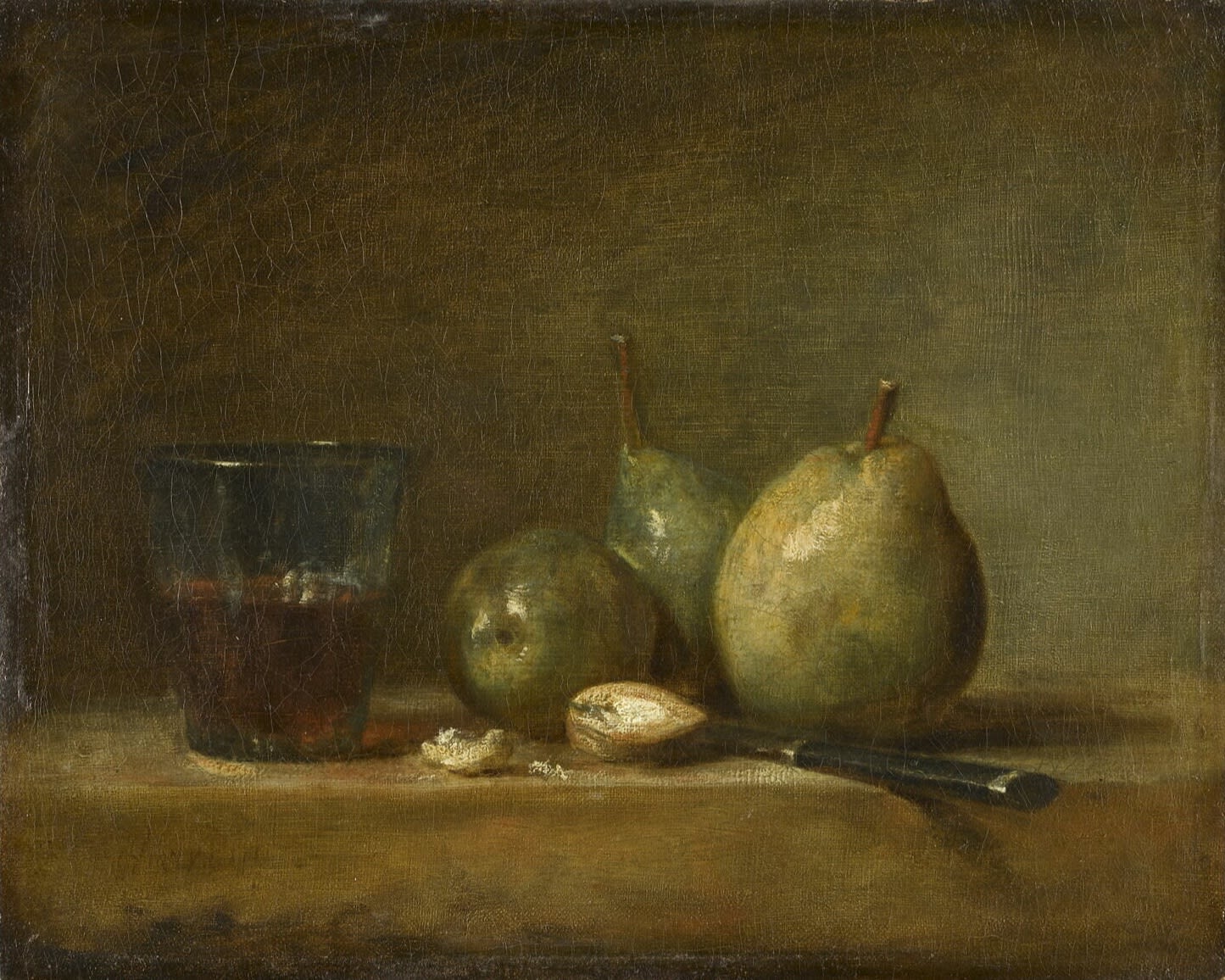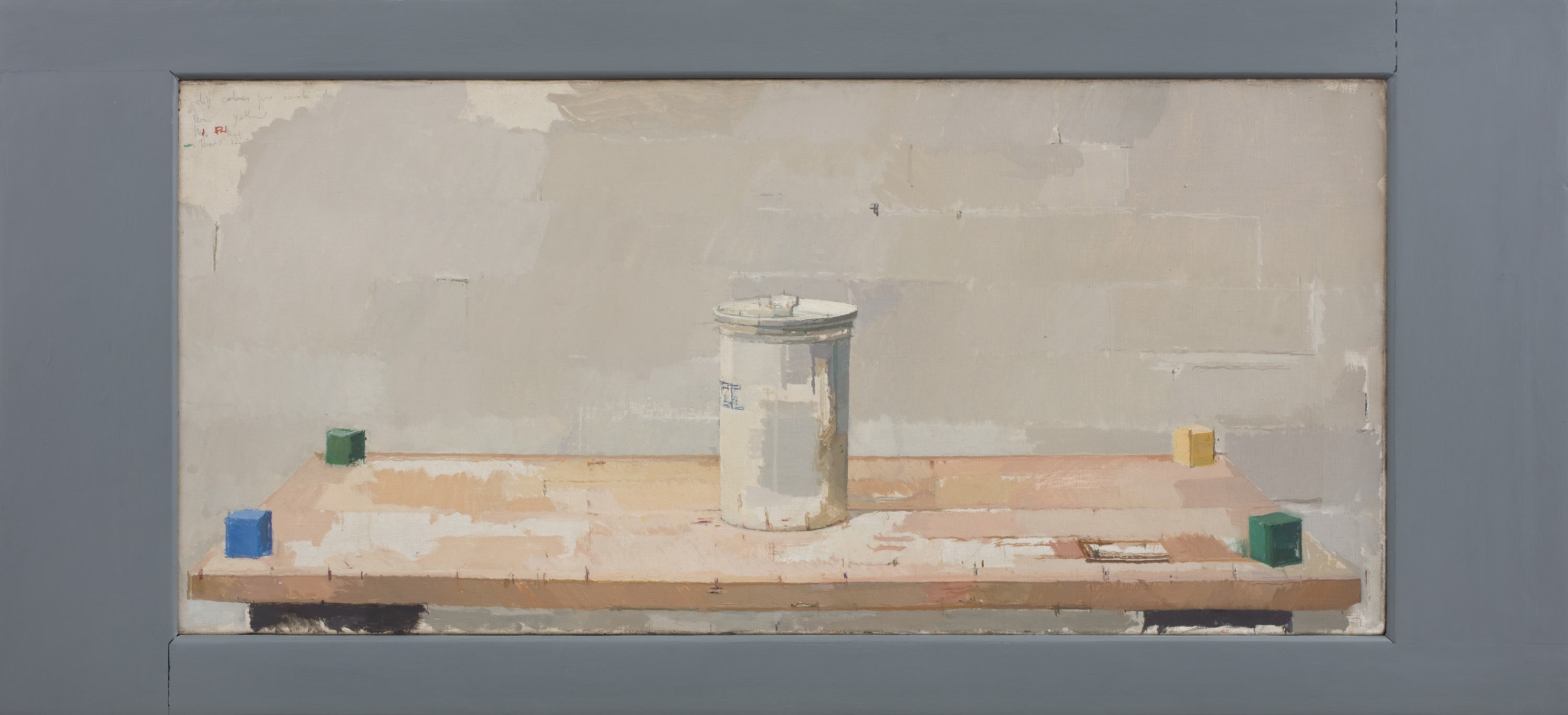Like Chardin three hundred years before him, Euan Uglow knew how to make a substantial image with oil paint.
InSight No. 159
Euan Uglow, Passionate Proportion, 1964
When a hungry person sees a pear, they survey it with interest. This piece of fruit is food, and to consume it would alleviate their discomfort. But when an artist or some other well-fed person looks upon the same pear, their gaze is disinterested. They can appreciate its shape, the colours of its skin, its individual peculiarities borne of imperfection or ageing. In the case of Euan Uglow (1932–2000), the disinterested gaze achieved a pitch of virtuosic intensity such that the subject—fruit, architecture, a naked female body—was studied at once clinically and ferociously. Uglow’s mature paintings express the aesthetic paradox that a gaze can be simultaneously interested and disinterested. Shorn of hunger or sexual desire, his paintings nevertheless register a deep involvement with the subject and the problem of how to represent it in the confines of a flat tableau.
Pears recurred as a subject in Uglow’s oeuvre and provide a telling case. ‘I usually paint pears’, he said to Andrew Lambirth in 1993, ‘because I like that twist of form. I like the way the stem is so important. You feel the stalk goes all the way through the pear to its base.’ These are the concerns of one who enjoyed pears not as fruit but rather a kind of complex formal object. In the case of pineapples, he appreciated how ‘the whole thing goes round in a logarithmic spiral.’ Uglow’s personal combination of interests—at once serious and playful, creating geometrically precise patterns tinged with wry humour or an erotic subtext—are neatly summarised in the title of a still life painted in 1964, Passionate Proportion, where the arrangement of an elementary composition produced ‘passion’. In a letter to Catherine Lampert in 2000, Uglow used a lightbulb analogy to describe the painting: ‘if you get two arcs they throw electricity across and get light. You have four cubes and they are giving off energy and you get a pot.’

Although at the time it seemed consistent with Uglow’s previously naturalistic still-life paintings of the late fifties and early sixties, Passionate Proportion was later singled out for the change it suggested in the artist’s attitude to picture-making. It reflects a deepening sophistication in the way that Uglow handled pictorial conventions (especially single-point perspective). In 1991, the critic Richard Kendall argued that Passionate Proportion was ‘one of the first of these pictures’ in which Uglow was ‘engaged with a new, and perhaps less polite, set of pictorial challenges.’ Stripping away the assumptions that underpinned representational painting, Uglow made a concerted effort to construct from first principles the surfaces and shapes of the table, the wall, the cylinder, the cubes. The front edge of the table has visibly undergone several operations to refine and specify its exact position in space—not straight, but rather subtly uneven. Moreover, by exposing the four corners and legs of the table, Uglow refused the habit of treating the line between the table and the back wall as an infinite horizon like in a landscape painting. Instead, the variegated surface of the back wall and the foreshortened recession of the table top became compelling ingredients in the composition.

Some of Uglow’s lessons in still life were taken from the eighteenth-century French painter Jean-Baptiste Siméon Chardin. For Uglow, Chardin was ‘the master’. In both large and small paintings, he composed dense, complicated groups of assorted objects—from both the kitchen and the dining room—and realised them in dense, substantial paintwork, so refined that the lifelike subject is often inextricable from the terms of Chardin’s brush. The presence of objects in his paintings—their weight, surface texture, opacity—is tangible. For Uglow too, the convincingly palpable evocation of objects in space was one of the purest challenges in painting. In Passionate Proportion, the cylindrical pot was painted with a quality of austere invention in the spirit of Chardin, the effects of volume, modelling and surface quality produced merely by juxtaposing irregular areas of opaque colour. At the left-hand edge of the pot some lettering in blue—‘EE’—indicates that this particular cylindrical vessel was a coffee jar.

Uglow felt compelled to address the hard problem of representation, to remake three dimensions in two with the highest degree of specificity possible. But he was aware that this satisfied only some of the demands on a painter. Although the accuracy of an image is important, it is insufficient to make the image a convincing work of art. Uglow chose his pictorial conceits with care and, as he said, ‘I like to have controlled space and placing’. Often by minimising the subject content of a painting—‘why would I reduce everything so much unless I wanted it stark?’—the construction itself became a vivid counterpoint to the thing he was representing. Passionate Proportion and other paintings by Uglow have a piquant visual quality whereby the subject and the way it is realised (with paint, measurements, single-point perspective) are made to register simultaneously and with equal force. In this equation, the blandest object became exciting and an undemonstrative touch of the brush became lucid and telling.

Images:
Jean-Baptiste Siméon Chardin, Poires, noix et verre de vin, c. 1768, Musée du Louvre, Paris
Jean-Baptiste Siméon Chardin, Le Melon entamé, 1760, Private Collection
Passionate Proportion (detail)
Passionate Proportion (framed)

